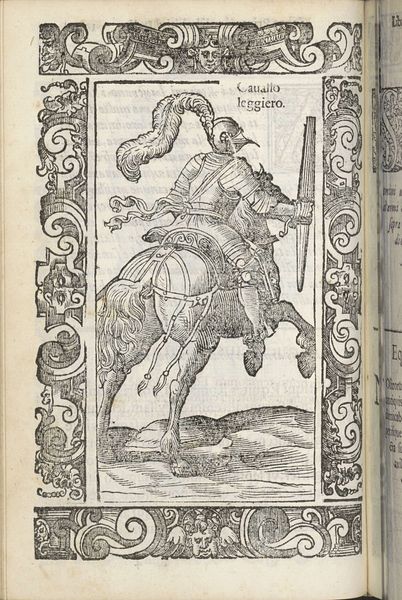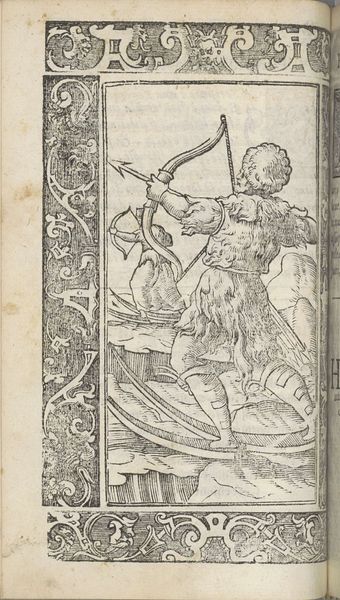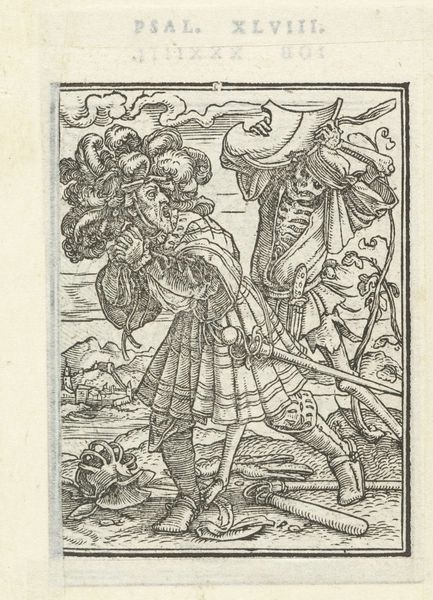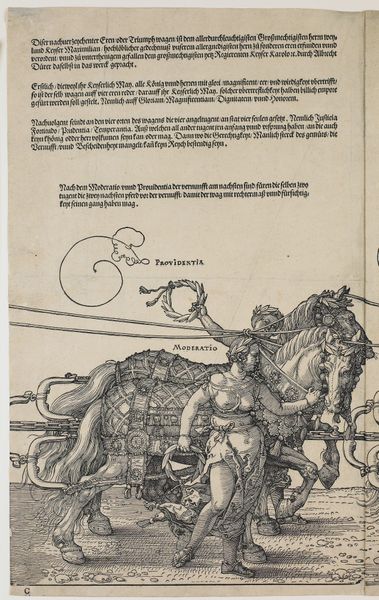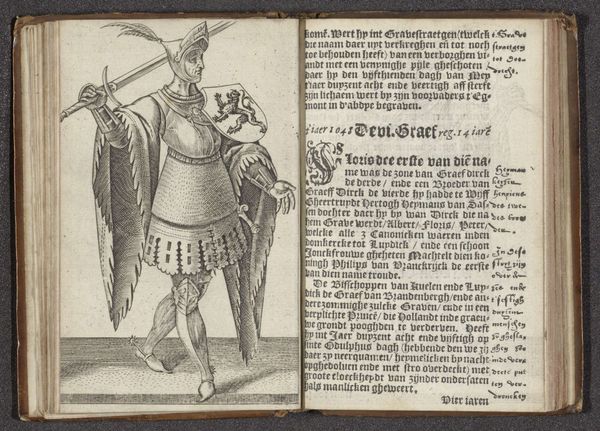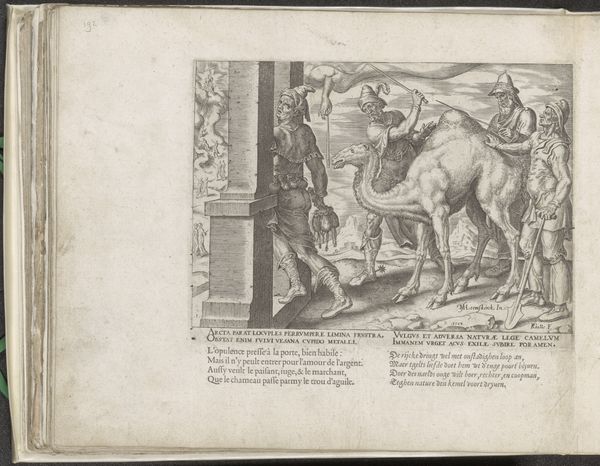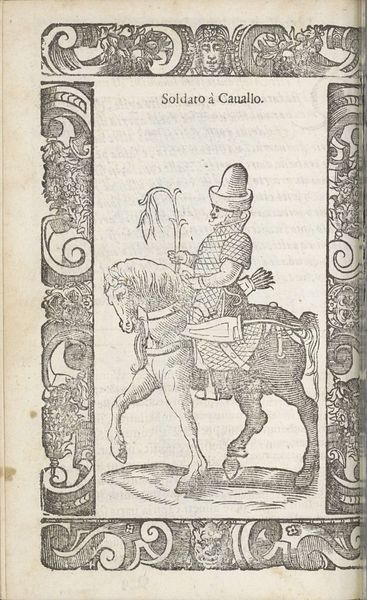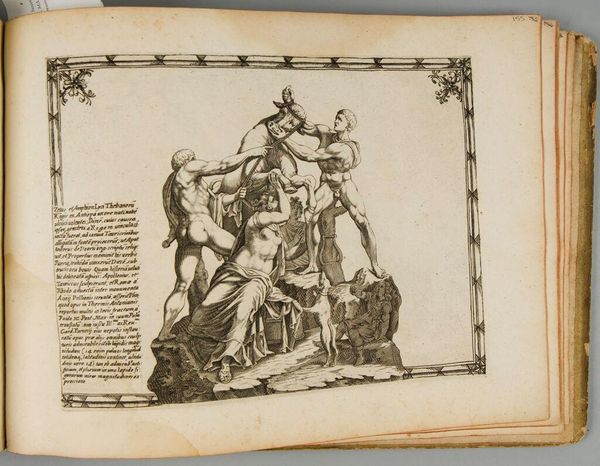
Discours de la Religion des Anciens Romains... Discours sur la Castramentation et Discipline Militaire des Anciens Romains... 1581
0:00
0:00
drawing, print, paper, engraving
#
portrait
#
drawing
#
medieval
# print
#
book
#
sketch book
#
paper
#
personal sketchbook
#
horse
#
france
#
men
#
line
#
history-painting
#
engraving
Dimensions: Overall: 9 1/8 x 6 3/4 x 1 11/16 in. (23.2 x 17.2 x 4.3 cm)
Copyright: Public Domain
Editor: Here we have an engraving from 1581 by Guglielmo Du Choul, taken from a book entitled *Discours de la Religion des Anciens Romains…Discours sur la Castramentation et Discipline Militaire des Anciens Romains...* currently held at the Metropolitan Museum of Art. The subject matter looks to be some kind of military leader on horseback; its lines give the impression of great motion despite its static nature. How would you interpret this work? Curator: This engraving offers a fascinating glimpse into the Renaissance fascination with classical Rome. Note how the rider’s figure consciously emulates Roman statuary. The inclusion of the eagle atop the staff is not arbitrary. It's a powerful emblem of Roman authority, a visual shorthand instantly recognizable to viewers of the time. Editor: It’s interesting how directly it references those classical roots, especially using such overt symbols. Curator: Precisely. Consider also the horse itself – it’s not simply a mode of transport, it's a symbol of power, virility, and conquest, all core elements of the Roman self-image. This engraving seeks to tap into and perpetuate that image. What do you think the intended audience was meant to understand? Editor: So it is about transmitting a visual language of power. Maybe the intent was to teach about, or perhaps even emulate, the perceived virtues of the Roman Empire? It’s like a manual. Curator: Indeed. This engraving served to perpetuate the enduring power and symbolic language of ancient Rome in early modern Europe. What else have you discovered? Editor: I now appreciate the conscious layering of symbolism to evoke and almost resurrect a sense of Roman imperial might.
Comments
No comments
Be the first to comment and join the conversation on the ultimate creative platform.

